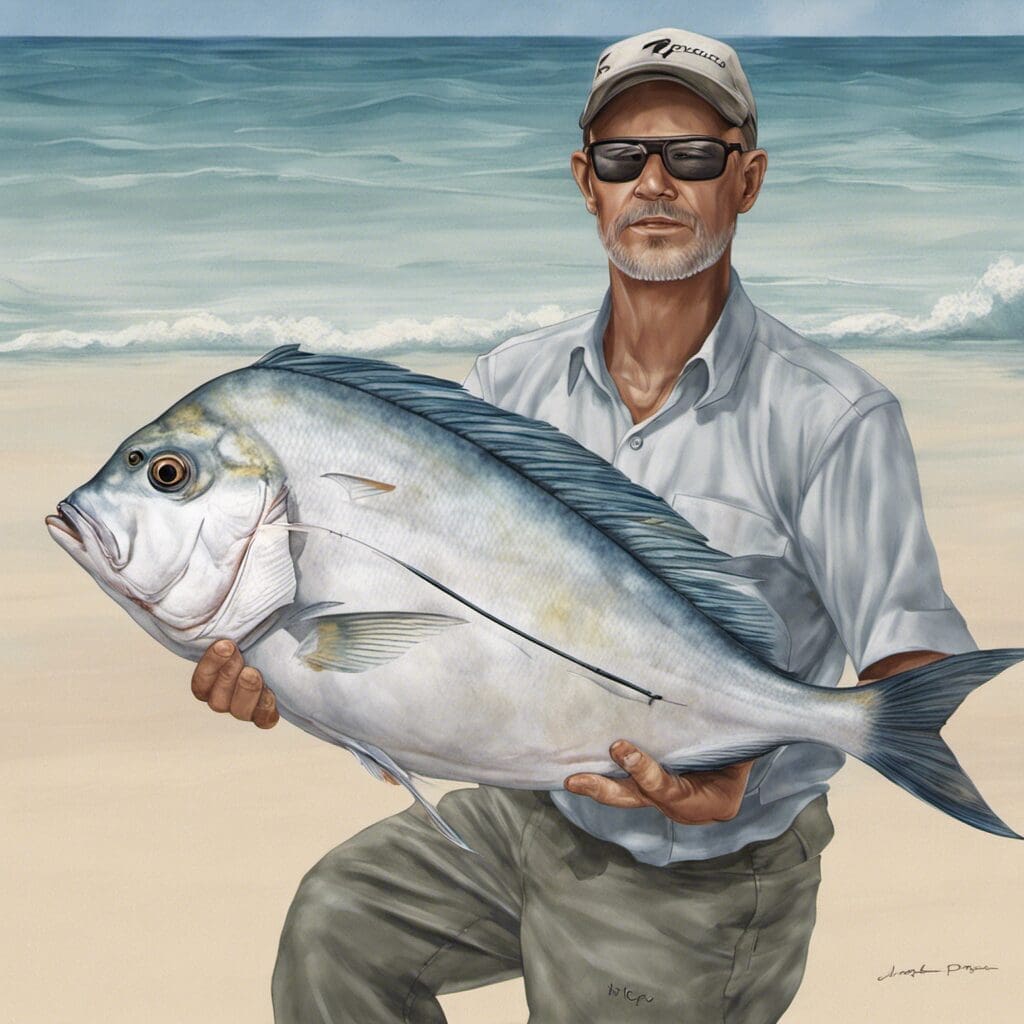Introduction
The African Pompano, also known as Jack, is a fascinating species of tropical marine fish. It is scientifically known as Alectis ciliaris and belongs to the Carangidae family.
Conservation Status
As per the list maintained by the International Union for Conservation of Nature (IUCN), the African Pompano is presently categorized under the “Least Concern” category. Despite being a target for commercial and recreational fisheries, the species is showing no significant decline in population to warrant concern. Conservation programs aim to maintain this stability through sustainable fishing practices
Statistics
| Stats | Average | Range |
|---|---|---|
| Length | 70 cm | 50-110 cm |
| Weight | 7 kg | 4-9 kg |
| Average Lifespan | 15 years | N/A |
Distribution
The African Pompano can be found in tropical waters around the world, commonly in Atlantic, Indian, and Pacific coastal regions. They are not known for their migratory patterns as they generally tend to stay within their specific territory.
Habitats
These fish generally prefer warmer, oceanic waters where temperatures are relatively steady. They are typically found at a depth of around 37 meters, but can inhabit depths ranging from surface level to 100 meters.
When and Where to See
African Pompanos are around all year, but they are most seen during the warmer months of the year. They are typically more active during daylight hours.
Best Fishing Locations
This species is popular among anglers, especially in areas like Florida, the Gulf of Mexico, and around the Caribbean. If you’re looking for a specific fishing location, consider:
- Jupiter, Florida
- Boca Grande, Florida
- Sarasota, Florida
- Texas Gulf Coast
- Costa Rica’s Pacific Coast
- Hawaii
- The Bahamas
- South Africa
- Australia
- Belize
How to Catch
The African Pompano tends to eat small fish and prawns, so trolling or live baits such as shrimps, squids, and small fish work well. Fly fishing, spin casting, and bottom fishing are all successful techniques. They are typically most active during the day, meaning daytime is generally the best time to catch them.
Identification Guide
The African Pompano is recognized by its silver body and slight blue-green hue on the back. Its shape is diamond-like, with long, thread-like appendages trailing from the dorsal and anal fins. There are no strong markings to differentiate it from other species, but its sleek, elegant shape and unusual fins set it apart.
Culinary
The flesh of the African Pompano is white, firm, and has a high-fat content, making it a preferred option in several culinary recipes. It works well grilled, baked, or fried, and has a rich, sweet, succulent taste. While its nutritional information may vary, it’s generally a good source of protein, vitamins, and omega-3 fatty acids.
Additional Information
African Pompanos feed on bottom-dwelling creatures, small fish, and prawns. There is no specific information on their mating rituals. Predators of this species include any larger fish and occasionally humans. Historically, they’re a valued catch among anglers worldwide for their fighting abilities, making them a star attraction in sports fishing.
References and Further Reading
- Wikipedia - African Pompano
- Florida Museum – African Pompano
- Fishbase – African Pompano
This detailed information will hopefully provide a comprehensive guide for those interested in this fascinating species

